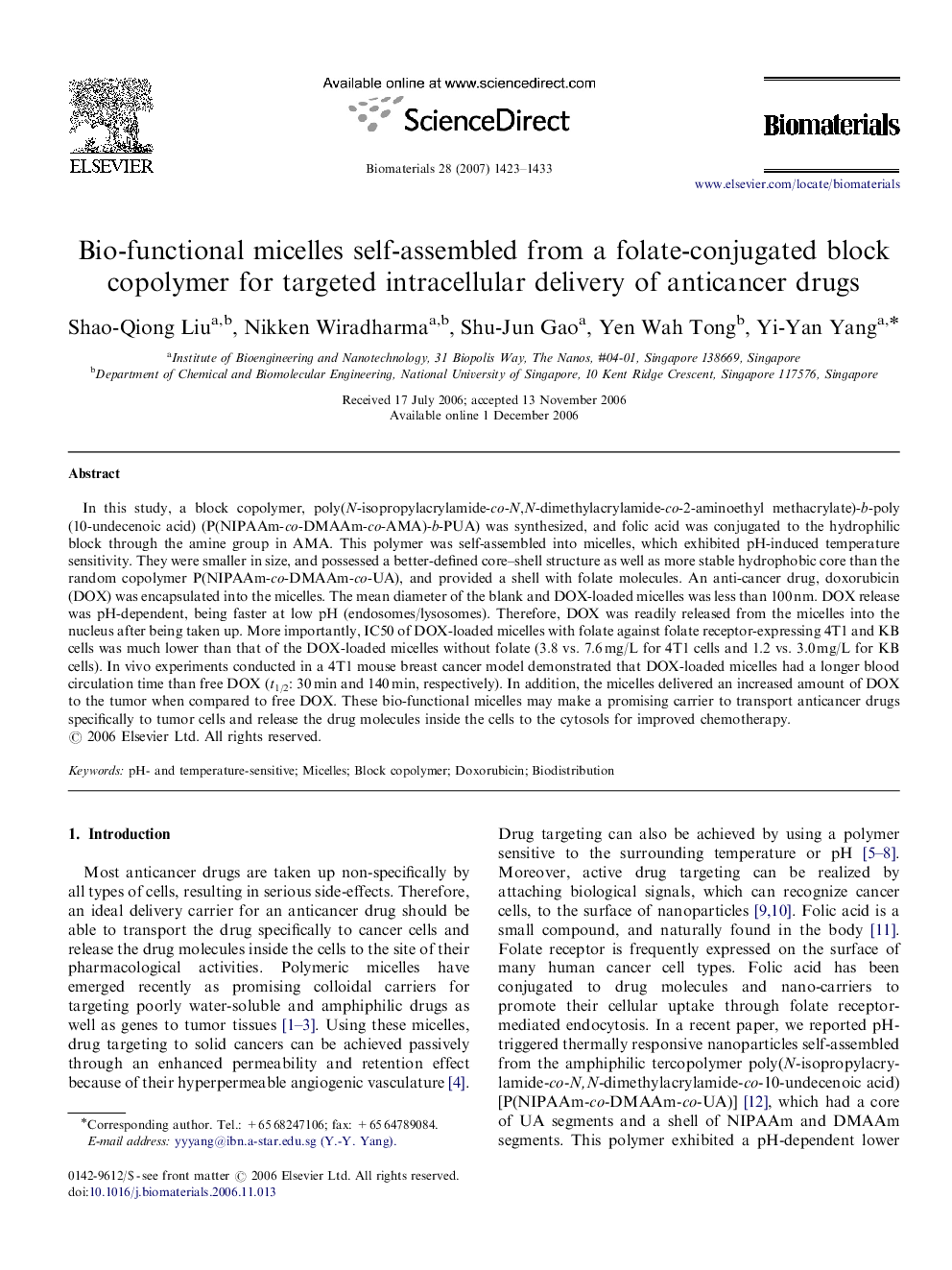| Article ID | Journal | Published Year | Pages | File Type |
|---|---|---|---|---|
| 11170 | Biomaterials | 2007 | 11 Pages |
In this study, a block copolymer, poly(N-isopropylacrylamide-co-N,N-dimethylacrylamide-co-2-aminoethyl methacrylate)-b-poly(10-undecenoic acid) (P(NIPAAm-co-DMAAm-co-AMA)-b-PUA) was synthesized, and folic acid was conjugated to the hydrophilic block through the amine group in AMA. This polymer was self-assembled into micelles, which exhibited pH-induced temperature sensitivity. They were smaller in size, and possessed a better-defined core–shell structure as well as more stable hydrophobic core than the random copolymer P(NIPAAm-co-DMAAm-co-UA), and provided a shell with folate molecules. An anti-cancer drug, doxorubicin (DOX) was encapsulated into the micelles. The mean diameter of the blank and DOX-loaded micelles was less than 100 nm. DOX release was pH-dependent, being faster at low pH (endosomes/lysosomes). Therefore, DOX was readily released from the micelles into the nucleus after being taken up. More importantly, IC50 of DOX-loaded micelles with folate against folate receptor-expressing 4T1 and KB cells was much lower than that of the DOX-loaded micelles without folate (3.8 vs. 7.6 mg/L for 4T1 cells and 1.2 vs. 3.0 mg/L for KB cells). In vivo experiments conducted in a 4T1 mouse breast cancer model demonstrated that DOX-loaded micelles had a longer blood circulation time than free DOX (t1/2: 30 min and 140 min, respectively). In addition, the micelles delivered an increased amount of DOX to the tumor when compared to free DOX. These bio-functional micelles may make a promising carrier to transport anticancer drugs specifically to tumor cells and release the drug molecules inside the cells to the cytosols for improved chemotherapy.
